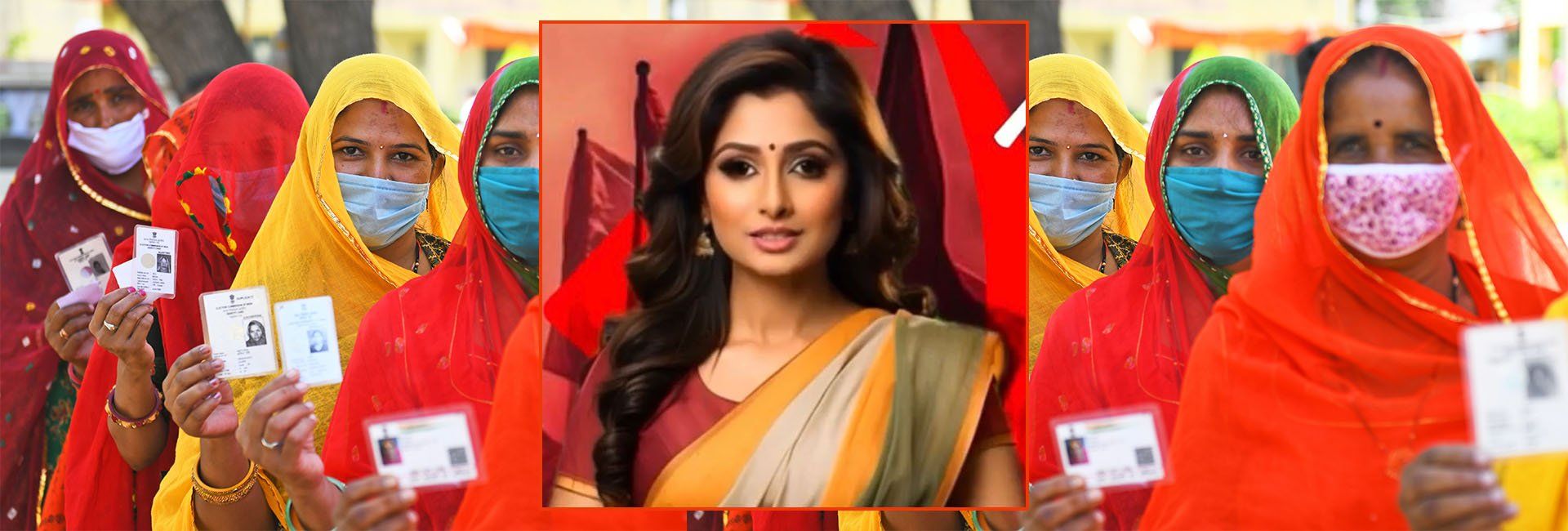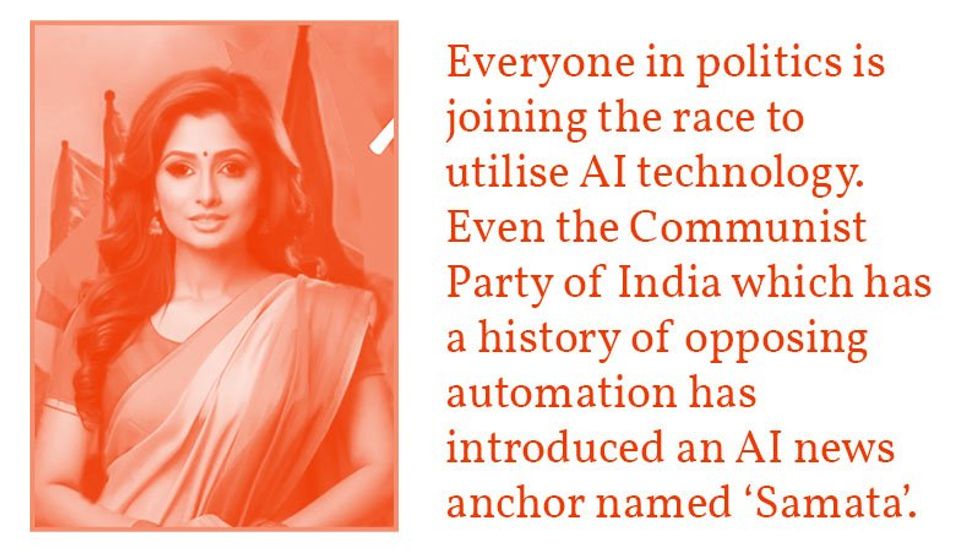Indian voters knew Manoj Tiwari as a Hindi-speaking politician, so they were surprised to see this version of the "New Tiwari" in this election cycle with the regional leader seemingly speaking fluently in two additional languages he had never before used in public.
In Haryanvi and English, he criticised the actions of an opposing politician, saying the same lines he had used in the original Hindi version of the video. Each movement in each shot was identical, barring the facial expressions and lip-syncing that mirrored the new language the BJP politician was using to deliver his message.
Voters saw through Tiwari’s unsophisticated deep fake video attempt to appear multilingual but across India, as the country prepares for its five-year Lok Sabha general elections commencing on April 19, election officials are concerned about how artificial intelligence could be deployed to sway voters.
Vice busts Manoj Tiwari's 'Deepfake' in which he is speaking Haryanvi | OneIndia Newswww.youtube.com
Indian Prime Minister Narendra Modi’s government, which has previously embraced artificial intelligence (AI) and said it wanted the country to become a global leader in the field by 2030, is now proposing regulations around the use of artificial intelligence and deep fake technology.
These Lok Sabha elections, which will run across seven phases from April 19 to June 1, are set to be one of the world’s biggest and most expensive elections. An estimated 970 million voters will decide the fate of the 543 members of the house of parliament as Modi vows for an unprecedented third consecutive five-year term.
Ramya Kolla, an AI expert based in Kolkata, explained artificial intelligence has long been used as a photo-editing tool in India and around the world. “Then the technology came to face swaps, then it became more rampant while using small videos.” She said it used to be possible to see the deep fake manipulation using the naked eye, but “things have advanced”. Now sophisticated software is required to identify the best deep fakes.
Kolla, speaking to Newsworthy via Google Meet, said there were two issues at play, misinformation and disinformation.
“Imagine this, tomorrow you have the elections happening, people are going to vote for you, and tonight, like the previous day night, there's a video circulating, or a voice message circulating, or a photo circulating about a politician doing some scandalous stuff. It is going to impact us.”
However, not all are concerned by the possibility of manipulation which AI offers. Shatrughan Gautam, a Member of the Legislative Assembly of Kekri and a former parliamentary secretary of Rajasthan said: “Tantrics” [manipulation] has been a part of politics for a long time, it’s not new. It’s a war and everybody is trying to win. It’s not a big issue in my opinion.”
“The deep fake videos are nothing, the voters are going to vote, and we rule in the hearts of our voters,” Gautam said, speaking to Newsworthy in Hindi.
There are no Indian laws, at present, against the misuse of AI but they are establishing them, Kolla said. However, with the Lok Sabha elections approaching, the government has urged caution on the introduction of new generative AI tools that could allow manipulation. Critics argue this move could hinder innovation and restrict freedom of speech.
On March 12, Prime Minister Modi told supporters in Ahmedabad the government was now requiring tech firms to seek permission before releasing under-tested generative AI models or tools. Additionally, it has cautioned companies against developing AI products that could compromise the integrity of the process as India prepares for elections.
On March 25, India's Misinformation Combat Alliance and Meta (Instagram and Facebook's parent company) joined forces to introduce a deep face analysis tool to try to identify deep fakes in the run-up to the election.
This shift towards monitoring and regulating artificial intelligence departs from the government's previous hands-off approach. Only a year ago, India's Parliament was told there were no plans for legislation to govern AI practices. In the year since, Google Gemini, an AI-driven search tool, earned the ire of India’s Ministry of Electronics and Information Technology for its response to the prompt “Is Modi a fascist?” Gemini's response referred to the implementation of policies seen as authoritarian around crackdowns on dissent and violence against minorities.
The World Economic Forum's Global Risks Report 2024 lists misinformation and disinformation as the top risk for India, highlighting its importance as a significant danger facing the nation in the upcoming two years. A recent Indian media report identified Chinese and North Korean cyber agents seeking to influence the upcoming elections through planting disinformation in the electorate.
Kolla, a supporter of AI's use in society, also recognises its potential as “a destructive wave, [that] can be used to influence, and change the perception of the voters”.
In spite of the the BJP Government's new caution around implementation and development of AI tools, everyone in politics is joining the race to utilise the technology. Even the Communist Party of India which has a history of opposing automation across industrry, has introduced an AI news anchor named "Samata", symbolising equality, for the 2024 Lok Sabha elections.
There has been a seeming shift to acceptance of AI with transparency. After imposing laws on AI, Modi recently praised Bhashini, an AI translation tool which translated an impactful speech by him in Hindi, into seven other languages – Tamil, Kannada, Malayalam, Odia, Bengali, Marathi and Punjabi. Modi then tweeted: “Technology has brought us closer together. Follow @NaMoInTelugu on X to hear my speech in Telugu. Also, let me know your views on improving the language in it."
– Podcast interview by Rosie Whittaker, Emily Vidler, Ryan Keel and Amanda Tan.
Vihan, from Jaipur, India, is currently studying a Bachelor of Media (Communication & Journalism) at UNSW Sydney. He loves to watch thriller movies, read and write forcefully and his day only goes great if he is heading to the gym.







Afraid of an egg: the tyranny of living with social media's body standards